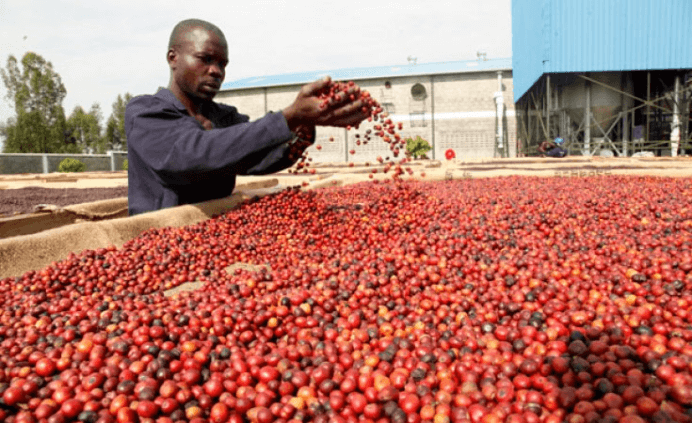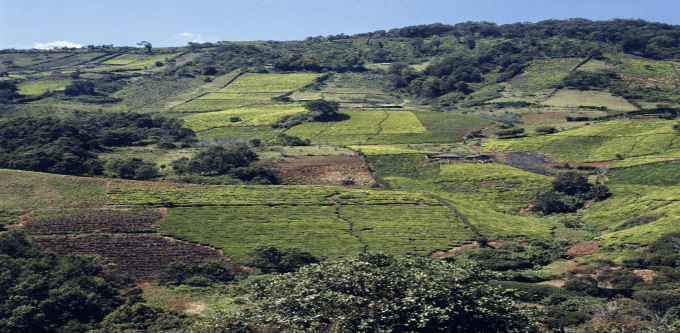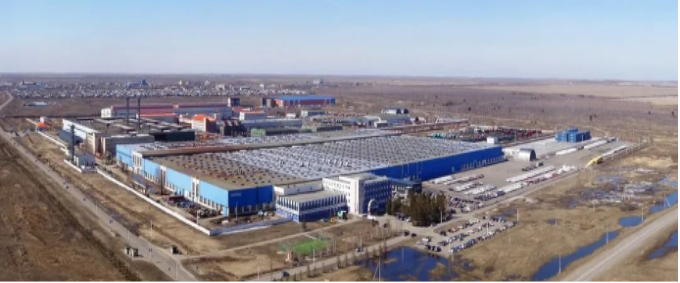

Investment Report on the Food Processing Industry in Kenya 2025-2028
Investment Report on the Food Processing Industry in Kenya 2025-2028
Golden Compass Go-Global Consulting

Special Statement
Each report embodies the professional judgment and rigorous verification of the analysts. This sample is for reference only. Please refer to the final approved version.
Report Price: 9800 yuan
|
service quotation |
Notes |
||
|
Standard Version |
Standard report module and data summary. It is suitable for small and medium-sized enterprises and individual business owners. |
9800 ¥ |
|
|
Partial customization |
Industry overview analysis, risk assessment, partial customization (2 persons * 2 weeks) |
(Industry/Country) 98,000+ |
No travel expenses included. |
|
Consult for customization |
Customized consulting for enterprise investment in a certain country's industry, including in-depth research, production analysis, and action plan (3 people * 4 weeks) |
(Industry/Country) 450,000+ |
Include travel expenses |
Industry Summary
Investment Value
The food processing industry in Kenya has significant investment value. As one of the largest economies in East Africa, Kenya's food processing industry is an important pillar of its economic growth. With the increase in the middle-class population and the improvement of consumption levels, the demand for healthy, nutritious, and convenient food is growing rapidly, providing a broad market space for the food processing industry. In addition, the Kenyan government actively promotes agricultural modernization and foreign investment, and provides a number of incentive policies, making the food processing sector a hot spot for attracting domestic and foreign investors.
Industry Scale and Growth
As of 2022, the scale of the food processing market in Kenya has exceeded 1 billion US dollars and is expected to continue to grow at an average annual rate of 5% in the coming years. In 2023, the real output value of Kenya's manufacturing industry increased by 13.1%, among which the food processing industry contributed 7.6% to the GDP. In the fourth quarter of 2023, the GDP of Kenya's manufacturing industry reached an all-time high of 220,536 million Kenyan shillings, and it is expected to grow to 243,836 million Kenyan shillings by 2025.
Number and Distribution of Enterprises
There are currently about 300 food processing factories in Kenya, and about 40% of these enterprises have an annual turnover of more than 1 million US dollars. These enterprises are mainly concentrated in the fields of tea, coffee, meat processing, dairy products, etc. There are many well-known listed companies in the food and beverage industry on the Nairobi Securities Exchange (NSE), such as East African Breweries Limited (EABL), Bidco Africa Ltd., etc.
Main Products and Exports
The main products of Kenya's food processing industry include tea, coffee, meat, dairy products, cereal products, and oils and fats, etc. Tea is the most important cash crop in Kenya, accounting for 15% of the export value. In 2023, the bilateral trade volume between Kenya and China reached 487.952 billion Kenyan shillings, a year-on-year increase of about 3.7%. The main export commodities include tea, coffee, flowers, and meat, etc.
Market Status and Scale
The food processing market in Kenya is large, with an annual output value of about 10 billion US dollars. Tea and coffee have strong competitiveness in the international market and occupy an important market share.
Development Status
The food processing industry in Kenya is in a stage of rapid development, with the market scale continuously expanding and the government's policy support strengthening. In 2023, agriculture and manufacturing accounted for 21.8% and 7.6% of Kenya's GDP respectively, and the food, beverage, and tobacco processing industry accounted for a large part of the manufacturing GDP.
Development Trends
In the future, the food processing industry in Kenya will develop towards high-value-added crops, organic agriculture, and sustainable agriculture. Digital agriculture and precision agriculture technologies will be widely applied. With the regional economic integration and the growth of consumer demand, this industry is expected to continue to maintain a strong growth momentum.
Relevant Policies
Through the "Vision 2030" plan, the Kenyan government proposed to increase the contribution rate of the manufacturing industry to the GDP to 20% by 2030. To this end, the government is building county-level industrial parks and giving priority to the development of agricultural product processing, textiles, leather, and other fields. The government provides tax incentives and technical support for food processing enterprises, encouraging them to expand production scale and improve product quality.
Relevant Enterprises
The main food processing enterprises include the Kenya Tea Development Authority (KTDA), the Coffee Board of Kenya (CBK), and several large dairy companies. East African Breweries Limited (EABL), Bidco Africa Ltd., etc. on the Nairobi Securities Exchange are also well-known listed enterprises.
Opportunities and Potential
The food processing industry in Kenya has great development potential, especially in high-value-added crops, organic agriculture, and export markets. Foreign investors can obtain substantial returns through technological cooperation and capital investment. With the increase in the middle-class population and the improvement of consumption levels, the demand for healthy, nutritious, and convenient food is growing rapidly, providing a broad market space for the food processing industry.
Challenges and Prospects
The main challenges faced by the food processing industry in Kenya include insufficient infrastructure, rising food prices, and market fluctuations. In 2023, the inflation rate of food prices in Kenya reached 9.3%, and the prices of major foods such as tomatoes and onions increased significantly, increasing the pressure on household expenditure. However, with technological progress and policy support, the prospects of the food processing industry remain optimistic.
Conclusion
The food processing industry in Kenya has broad development prospects and investment potential. Through policy support, technological progress, and market expansion, Kenya is expected to become a leader in the food processing industry in Africa. For further details, please refer to the latest industry report from Golden Compass Go-Global Consulting.
Table of Contents
Current Development Situation of the Food Processing Industry in Kenya
1.1 Industry Scale and Structure
1.1.1 Overall Scale
1.1.2 Composition of Sub-sectors
1.2 Raw Material Supply Foundation
1.2.1 Overview of Agricultural Production
1.2.2 Stability of Raw Material Supply
1.3 Industry Production and Technological Level
1.3.1 Production Equipment and Processes
1.3.2 Technological Innovation Capacity
Policy Environment of the Food Processing Industry in Kenya
2.1 Industrial Support Policies
2.1.1 Financial Subsidies and Tax Incentives
2.1.2 Construction of Industrial Parks
2.2 Regulatory Policies and Standards
2.2.1 Food Safety Regulations
2.2.2 Quality Standard System
Market Analysis of the Food Processing Industry in Kenya
3.1 Domestic Market
3.1.1 Market Demand Characteristics
3.1.2 Market Competition Pattern
3.2 International Market
3.2.1 Export Scale and Product Structure
3.2.2 International Trade Environment
Investment Opportunities in the Food Processing Industry in Kenya
4.1 Investment Opportunities in Sub-sectors
4.1.1 Processing of Characteristic Agricultural Products
4.1.2 Processing of Emerging Food Categories
4.2 Investment Opportunities in the Industry Chain
4.2.1 Upstream Raw Material Supply Links
4.2.2 Downstream Sales and Brand Building
Investment Risks in the Food Processing Industry in Kenya
5.1 Natural and Raw Material Risks
5.1.1 Impact of Natural Disasters
5.1.2 Fluctuations in Raw Material Prices
5.2 Market Risks
5.2.1 Risk of Demand Fluctuations
5.2.2 Risk of Intensified Competition
5.3 Policy and Legal Risks
5.3.1 Risk of Policy Changes
5.3.2 Legal Compliance Risks
Investment Suggestions and Case Analysis
6.1 Investment Strategy Suggestions
6.1.1 Selection of Investment Methods
6.1.2 Selection of Investment Regions and Projects
6.2 Analysis of Successful Investment Cases
6.2.1 Case 1: [Brookside Dairy Limited]
6.2.2 Case 2: [Bidco Africa]
6.3 Analysis of Failed Investment Cases
6.3.1 Case 1: [Tuzo Dairy Limited]
6.3.2 Case 2: [Kenya Nut Company]
Conclusion and Outlook
7.1 Summary of Research Conclusions
7.2 Future Development Outlook
References
List the literature cited in the report.
 The Golden Compass is the preferred choice for going to sea!
The Golden Compass is the preferred choice for going to sea! 

 9800
9800 




